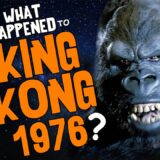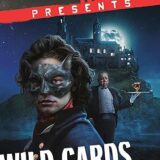Today is February 7th, and with Valentine’s Day around the corner, love is in the air. Which is why this month I’ll be taking a look at romance, and how it rubs up against speculative fiction. Before I get into it, I’d like to say that my analysis has benefited greatly from reading the many insights of others (particularly The Galaxy Express, Smart Bitches, Trashy Books, Alien Romances, See Light, Radish Reviews, and the work of Pamela Regis and Janice Radway), so if I make any blunders in my own analysis, they are entirely my own.
Two Genres, Both Alike in Dignity
Speculative fiction and romance have spent much of their histories in the literary ghetto. Neither received the love of mainstream literary critics, and both have been (and sometimes continue to be) dismissed as escapist or formulaic, and so by implication, of no value to (some implausibly imagined) society. And yet, the two genres have been and still are incredibly popular. Clearly, science fiction, fantasy, and romance each provide us with value. Otherwise, we wouldn’t spend our money buying them, or our time reading them.
Despite its escapism, speculative fiction explores social, philosophical, and moral themes as a matter of course. At its best, the genre utilizes its narrative conventions and speculative devices to explore thought experiments, imagine their consequences, and dramatize values. And the romance genre does the same. But the primary difference between the two lies in their central concerns: speculative fiction – whose subtext and narrative structures vary broadly among individual titles, authors, and sub-genres – features myriad central concerns. Romance – across all titles, authors, sub-genres, and even time periods – is always centrally concerned with sex power.
And this is both romance’s greatest strength, and the source of its greatest weakness.
We Don’t Hold with Taxonomic Ambiguity
At one point or another, we’ve all debated the fuzzy definitions of science fiction and fantasy. The genre is porous, and the borders between its variants are hazy at best. Romance, despite some grumbling amongst its critics and authors, is much more clearly defined. Here’s how the Romance Writers of America describe it:
Two basic elements comprise every romance novel: a central love story and an emotionally-satisfying and optimistic ending. – Romance Writers of America
That’s pretty succinct. Part of me wishes we had such clarity when it comes to speculative fiction. More significantly, this clarity still holds when we wade into the sub-genre weeds, with sub-genres clearly determined by their time-period (contemporary romance versus historical romance), their plot devices (romantic suspense), their audience (young adult romance), or their content (paranormal romance – which includes both science fiction and fantasy romance – and inspirational romance). The genre can be further broken down either by the type of romance portrayed (heteronormative, gay, lesbian, etc.) or by the way sex is depicted (ranging from “sweet”, with all the action off-camera, to “extremely hot”, with all of the glorious raunch right there in the text).
For all of its simplicity, this taxonomy is incredibly powerful. Every romance title – from the classics like Jane Austen, to more modern fare like Nora Roberts
– can be pretty easily categorized. However, the roots of this taxonomy – the need for a central love story, and for a happy ending – impose fundamental constraints on the narrative structure. If a romance is to be interesting, that “central love story” needs more than just emotions, more than just sex. It needs conflict, and that naturally turns into the “will-they-or-won’t-they” dynamic that romance so frequently gets criticized for.
Romance is a formulaic genre because its defining characteristic enforces a consistent narrative structure, which makes criticisms of its predictability and consistency pretty accurate. But there’s more to any good story than its structure, and romance becomes particularly interesting when we consider its subtext.
The Exploration of Power
To give credit where it is due, it was the confluence of three different essays (one by Carrie Vaughn, another by Lilith Saintcrow, and a third by Natalie Luhrs) which first made me realize that romance is all about power. But while their essays focused on urban fantasy and paranormal romance, I think the principle extends across the entire romance genre.
Fiction – of every genre – is relevant to us because it models reality. Sure, our daily grind might not feature interstellar travel, sentient aliens, fuzzy-footed hobbits, or sexy vampires, but the dynamics at play with these metaphorical constructs remain recognizable to us. All fiction – and especially speculative fiction – comments on reality by helping us to step outside of it.
The romance genre – even when it is devoid of any speculative elements – focuses on modeling relationship dynamics. That “central love story” forces this focus upon us. And – just as in physics – one of the defining characteristics of any relationship is the power of its constituent parts.
Jane Austen’s novels – considered by many ur-texts of romance – famously dramatize and portray the economic, social, and gender power dynamics of Austen’s time. It is those dynamics, and in Austen’s case their frequently gendered dimension, which leads them to resonate so strongly. Austen’s portrayal of Lizzie Bennett (Pride and Prejudice), of the Bertrams and Crawfords (Mansfield Park
), or of Sir Walter Elliot and Captain Wentworth (Persuasion
) all revolve around the power of those characters in their own lives, in their families, in their communities, and in the broader world around them. Yes, the focus is on the love story between two characters, and the respective emotions, logic, and passions which drive them. But this “love story” becomes an efficient and emotionally charged vehicle for dramatizing the power dynamics between the lovers, and in their (fictional) world.
This carries through seamlessly from Austen’s time, through to our own era. A line can be drawn from Austen, to Charlotte Bronte’s Jane Eyre, Emily Bronte’s Wuthering Heights
, Elizabeth Gaskell’s North and South
, straight through to Georgette Heyer’s These Old Shades
, and from them into the genre’s more modern form. What is Kathleen E. Woodiwiss’ The Flame and the Flower
if not an exploration of gender and class-derived power? The same can be said for Nora Roberts’ first novel (Irish Thoroughbred
), and all of the tamer and feistier heroines and heroes who followed.
Romance’s sword of power cuts both ways: for every novel that dramatizes an empowered heroine (or hero) with agency and the opportunity and drive to apply it, there are others which laud or promote more traditionally heteronormative gender roles. Regardless of how these models align with our own values, or of how we respond to the values they portray, the resulting breadth of argument is one of the romance genre’s core strengths: across its sub-genres and throughout its history, we can find every permutation of social, political, religious, ethnic, gender, and cultural power dynamics. And every month, new permutations are getting published.
So are romance novels all about the sex? Only in the way that science fiction novels are all about the spaceships, or that fantasy novels are all about the swords. The sex – and the emotions, and the relationships – characteristic of the romance genre are just there as an effective means of dramatizing the subtext. They get their more serious job done quickly, efficiently, and by tapping into our deeper primal urges.
Regardless of whatever kink they might feature, romance novels aren’t all about the sex: they’re all about the power.
How Speculative Fiction Gets In on the Action
So how does that play with speculative fiction? Science fiction and fantasy are both at their best when exploring complex social and cultural themes. One would think that a genre which could produce Walter Miller, Jr.’s A Canticle for Leibowitz, Joanna Russ’ The Female Man
, Megan Lindholm’s Wizard of the Pigeons
, or Ursula K. Le Guin’s A Wizard of Earthsea
should be equally at home with the power dynamics of Pride and Prejudice
or Playing the Odds
.
And yet, I find that speculative fiction has both an uncomfortable and close relationship to the conventions and themes of the romance genre, both within the text and within speculative fiction’s broader fandom. The ways in which the two genres interact depends almost entirely on which genre’s roots take primacy in a given work:
When speculative fiction is written from a foundation in the romance genre (as in the “paranormal romance” or “science fiction romance” sub-genres), the results are very different from when romantic elements get incorporated into an otherwise speculative foundation. The ways in which both the stories get constructed and the ways in which their themes of power get developed are very different, rely on different devices, and produce different effects in the reader.
Next week, we’ll dive into the often steamy, often kick-ass world of paranormal romance and urban fantasy. ‘Til then, what are some of your favorite examples of romance? Or romance-imbued speculative fiction?





















Recent Comments